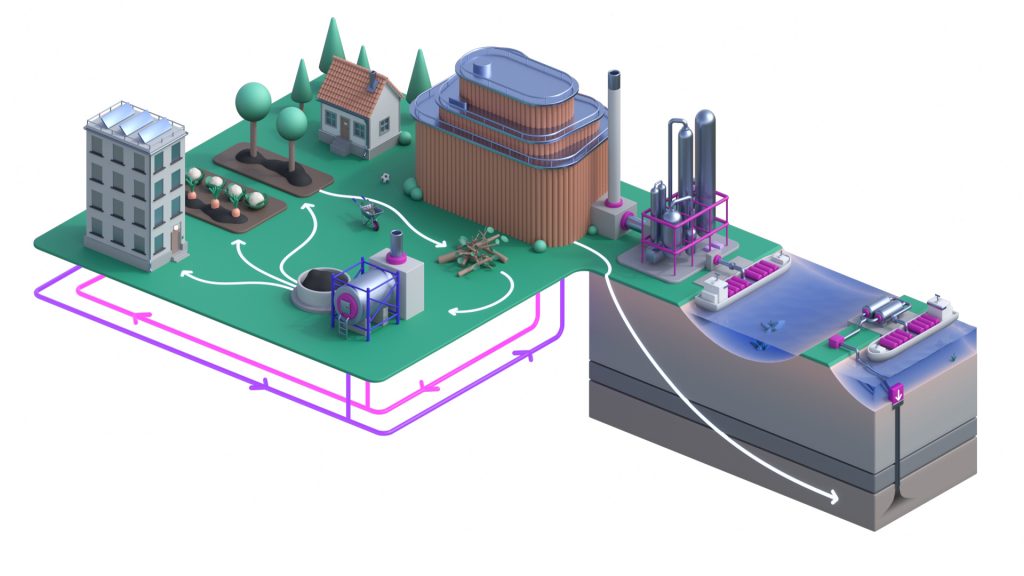

The production and consumption of energy has historically been associated with greenhouse gas emissions, but through district heating with negative emissions, the reverse is possible. The technology behind negative emissions reduces the amount of carbon dioxide in the atmosphere in line with efforts that must be made to cope with global warming under the auspices of the UN Paris Agreement.

There are several methods for extracting and storing carbon dioxide from the atmosphere, processes that create what is known as “negative emissions”, carbon capture, or carbon sinks. Stockholm Exergi is focusing on two key approaches, both of which are based on photosynthesis.
We’re testing and developing two different technologies.
Bio-CCS involves the separation and storage of carbon dioxide formed during the combustion of biofuel. With the support of the Swedish Energy Agency, Stockholm Exergi installed a Bio-CCS research facility at our bio-cogeneration plant. The plant opened in December 2019. The same technology can be used to separate carbon dioxide from waste incineration. This also gives rise to negative emissions, but not to the same degree as with biofuels.
The second method for creating negative emissions is to produce biochar in modern charcoal kilns. The kilns bind carbon dioxide and store it stably in biochar, which is a powerful soil improver and acts a carbon sink.
There is considerable potential to create negative emissions in the Stockholm region. A comprehensive report commissioned by the City of Stockholm shows that bio-CCS and biochar have the potential to reduce climate impact to a far greater extent than other measures. The report also shows that the costs associated with these technologies are lower or similar to other measures.